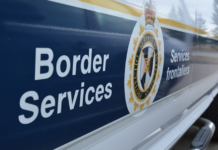International students seeking asylum in Canada has become an explosive trend, with the number more than doubling over the last five years.
Government data obtained under an access to information request by the Toronto Star has revealed that the number of refugee claims made by international students is 2.7 times higher than the amount of claims in 2018.
Last year, there were 4,880 cases and in 2018, there were only 1,835.
Additionally, the amount of international students coming to Canada has shot up by 1.4 times the amount over the same time period from 567,065 in 2018 to 807,750 in 2022.
Since 2018, a total of 15,935 international students have filed a refugee claim in Canada.
Between 2018 and 2022, the annual rate of international students seeking asylum doubled from 0.3% to 0.6%, despite the fact that less than 1% ended up seeking protection in Canada.
The hefty tuition fees for international students has become a lucrative racket for Canadian schools and employers seeking to fill low-wage jobs like fast-food retailers, short term gigs and factories.
This has led to sectors in post-secondary education and unregulated foreign agents to utilize aggressive recruitment campaigns.
However, in 2023, many international students are struggling to get affordable housing and employment, resorting to food banks.
This has brought forth many critics of these programs, who are calling for a more stringent admission process and better support for students once they arrive.
The majority of international students are attending public and private colleges because they offer programs which are cheaper and shorter in length when compared to universities.
According to the asylum data, Ontario is the province which is home to eight of the top 10 post-secondary institutions, which host the highest number of refugee claimants.
At the top of the list is Seneca College, with a total of 695 of their international students seeking protection in Canada from 2018 to 2022.
The next highest was Niagara College with 455, then Centennial with 460, followed by the International Language Academy of Canada with 415.
George Brown, Fanshawe, Humber and Conestoga were also listed in the top ten.
Outside of Ontario, the Université du Québec à Trois-Rivières had 435 and the University of Regina had 305, ranking fourth and ninth, respectively.
As long as an international student’s asylum claim meets the legal requirements to justify their need for protection, there is nothing to prevent them from making a case, under the Immigration and Refugee Protection Act.
This means a student could come with the legitimate intention of residing in Canada only for the duration of their studies but may decide to seek asylum later, if the situation worsens in their home country.
The data provided by the Immigration Department revealed for the first time the number of asylum seekers who initially came on a study permit because the Immigration and Refugee Board itself does not collect data based on how the claimant originally arrived in Canada.
Earlier this year, the Canadian Border Service Agency launched a probe into a number of students using fake college admission letters via unregulated education agents to acquire study permits to enter Canada.
The evidence uncovered in the probe prompted Immigration Minister Marc Miller to review the international student programs and consider putting a cap on the amount of study permits granted annually.
“We have a system that has lost its integrity and is subject to some of the worst aspects of fraud,” Miller told reporters recently.
Miller plans to introduce a new process to verify school acceptance letters for each study permit applicant, beginning in December.





















